Elderly people in casual clothing are walking slowly through the narrow alleys. Others are standing in groups together, having a chat. People on bicycles are slowly riding by. Others transport all different sort of loads on their motorcycles and on handcarts. Laundry is dried in the streets. Lanes and streets are narrow and many of the houses have a courtyard. The atmosphere is peaceful, quiet and laid-back, and one can hear the birds singing. That’s how life is in the Hutongs, how the old quarters which can be found in northern chinese cities, especially in Beijing, are called. They are the soul of the city, where life is still how it used to be hundreds of years ago.
It’s the 17th April 2013. Before checking out I come across Jane in the hotel lobby, the nice young woman from Boston, with whom I had a good nightly talk two days ago. She admits that she envies me, as I will be heading to Shanghai tonight, while she won’t see much more of China than Beijing during her one-week stay. When telling her about my plans to do a Hutong tour by cycle rickshaw today, she is thrilled and says that she could imagine to do something like that with her son and his friend. She adds that she would love to hear how I liked it and I promise to leave her a note in case I don’t see her anymore, before we leave to the train station to catch our overnight train to Shanghai. In her opinion 140 to 150 Yuan for one hour with the cycle rickshaw is not too expensive, as she often pays a lot more when taking a cycle rickshaw in New York City for only very short distances. But of course she is aware that one can’t compare the prices in New York City with those in Beijing. We talk again for about one hour. I highly regret that I probably won’t meet her again, and that she and her son are not two of my travelmates. They would have probably fit excellently into my group with whom I am very happy with.
After having finished all formalities with the hotel, I walk into the nearby Mall where I have found a japanese-style restaurant yesterday which I want to try out. It is a narrow restaurant with a huge cooling counter offering a wide selection of noodles, vegetables, meat, fish, seafood, tofu, herbs et cetera. One chooses all desired ingredients first before passing them to the staff who prepares a dish out of it, regarding the customers requests. I am the only westerner in this place and no one else speaks a word of English, so I am a bit astounded first, when the woman behind the counter starts to talk to me in chinese, probably asking for my requests. As I can’t speak any chinese so far except of “Nǐ hǎo” (Hello!) and “Xiè Xiè” (Thank you), I just hand her the plate with my ingredients and the sheet of paper where Leon has written down for me in chinese characters, how to order my desired dish. About five minutes later I get my food. The restaurant is very well-attended, so I take a seat at a tiny table opposite a local who is already eating. My dish is not exactly what I thought it would be, but it’s simply delicious, so I just enjoy my meal. The atmosphere is busy, hectic and noisy. I hear the people around me talking in a language I don’t understand, but that’s exactly what I love: being in the thick of things and really experiencing local life. As much as I was anxious before coming to China, fearing to get lost and encounter situations where I won’t be able to communicate in any of the languages which I have learned so far, the more I really like just that now.
Once I have finished lunch, I take the metro till Guloudajie station. Right after exciting the station I am approached by two guys who each offer me a Hutong tour by rickshaw, but one doesn’t seem to be trustworthy to me and the other one doesn’t really understand English plus he has a motorcylce with a passenger seat not a cycle rickshaw; not really what I am looking for. So I continue towards the Bell Tower which I can see already. At the edge of the quarter, it’s probably the Hutong already, I ask a local lady for the way to the Behai Park and where I would find the cycle rickshaws there. She beckons to a man who turns out to be her husband, and guess what?! He owns a cycle rickshaw! As he seems to be more trustworthy than all other cycle rickshaw drivers I have met before, I decide to go with him. Thanks to the guideline of Leon I manage to negotiate a fair price and we set off into the Hutong.
The word Hutong comes from the mongolian word hudun for water well. During the Yuan Dynasty (1271 – 1368) it was also the name for lanes or narrow streets connecting courtyards at that time. The Mongolians attached great importance to water, so almost all quarters were constructed around a water well during the Yuan Dynasty. Dry wells can still be found in the Hutongs.
The number of the Hutongs in Beijing increased from 29 in the Yuan Dynasty to more than 1.000 in the Ming Dynasty (1368 –1644) to over 2.000 during the Qing Dynasty (1644–1911) and they were built around the Forbidden City. In 1949 there should have been more than 3.000 of them. Bathrooms and public toilets were often located in the lanes and shops were selling goods for the daily needs of the people. Nowadays there are only about 1.000 Hutongs lefts in Beijing. More and more of them are demolished and replaced through high-rise buildings, but several of the oldest and most beautiful ones are listed for historic preservation.
Apparently all rickshaw drivers offer the same routes, stopping at the major attractions. First we stop at the Bell Tower, followed by the Drum Tower which is located only 100 metres south of it. They were both built in 1272 and were used for telling time during the Yuan, Ming and Qing Dynasties (1271 – 1911). Even during the early Han Dynasty (206 – 220 BC) there was a morning bell and a dusk drum in Beijing to help the people to live and work. As a result Bell Towers and Drum Towers were built in almost every city all over China. The Bell in the same titled Tower in Beijing is the biggest bell in the whole country and consists of copper. It is 7.02 metres high, weighs 63 tons and is ringed with two 2-meter-long wooden logs hanging sideward. The Bell Tower itself is 47.9 metres high, a little bit higher than the Drum Tower with a height of 46.7 metres. In former times there was one big and 24 smaller drums, but today there is only the big drum left. The Bell and the Drum are nowadays only beaten for New Year’s Eve, 108 times altogether,to send a blessing to the people. 108 times represented one year in ancient times
We make further intended stops at picturesque Gates, an idyllic courtyard with a (not so long) long corridor and at a liquior museum, but I would also like to take photographs of the street scenes. As it is not always easy to photograph out of a moving rickshaw, I ask my driver from time to time to stop, so that I can walk a few steps and take further photos of what I encounter.
Life in the Hutongs seems to be a lot more slowly than in the modern parts of Beijing, and the atmosphere very much a laid-back. People are sitting on small stools and watching what is going on around them. Others are standing in the alleys, chatting. Motorcycles and people on bicycles are passing by slowly. Street vendours are selling fruits and vegetables. A group of men demolish a wall by hand. Other cycle rickshaws, partially with local people, are coming from the opposite direction, so apparently cycle rickshaws are not only to take around tourists coming to Beijing, but also a mode of transportation for short ways. Rickshaw drivers who currently don’t have clients are taking a rest in their rickshaws. At a square right next to the Bell Tower many cycle rickshaws are lined up. As one hour is almost over anyway, I tell my driver that it he could drop me off here, as we are very close to where we started. On the way back to the metro station I am passing by a coffee shop which advertises with “Fucking good coffee”. Apparently the owners are convinced from what they offer.
Back in the hotel I meet my travelmates and Leon, who lets us know who will be sharing compartments with whom. I get to know that I will be bunking with Ingrid, Bianca, Mark and Carl, the family from South Africa, and with a random foreigner. I just deposit a short note for Jane at the reception, telling her how much I liked my Hutong tour and that I could really recommend her to do this with her son and his friend.
At 5 P.M. we leave for the train station. To get there we take the metro which is a quite a challenge as it is rush hour and the whole working population of Beijing seems to be heading home just now. At “Chongwenmen” Subway station next to our hotel we have to x-ray our all our luggage, also our big backpacks, before being allowed to descend to the platforms. As we don’t fit all in one train with all our big luggage we seperate onto two trains coming right after each other and meet back at the Beijing Railway Station which is only one stop away.
There we first store our big luggage in a corner which is also our meeting point. Then a few others of my group and I go to a nearby chinese fast food restaurant. As the place is very well-attended we split and take the few empty seats which are left in the restaurant. Next to me sits a young chinese female who wants to know where I am from, what I am doing in China, what places I will be going to visit and how I like it so far. She is 18 years old and just started studying English, Politics and Law at one of the Universities in Beijing. Originally she comes from Hangzhou, a city, 190 kilometres southwest of Shanghai, and is now taking another overnight train home to visit her family for an extended weekend. She tells me how happy she is to practice her English.
In between those people of our group who have guarded the luggage have moved it to another side of the station concourse. I feel so sorry for Alexander who has carried my big backpack, as it isn’t really lightly-packed. Soon after we are all back from dinner, we walk to the platform where we board our overnight sleeper train to Shanghai. Leon shows all of us our compartments which are right next to each other. Ingrid, Bianca, Mark, Carl and I are meeting the guy we will be bunking with. When he gets to know that Leon is our Tour Leader and that he will be sleeping in a totally different part of the carriage than we are, he offers right away to switch with him, so that Leon is now in our compartment.
The compartments are not a real compartments. They don’t have doors, but at least they have a short wall at the foot end of the bunks, different than in other sleeper trains in China which have ladders there instead. There are three beds above each other on both sides of the compartment and a long corridor passing by through the whole carriage of the train. In our compartment Bianca and Carl, the two teenagers, have got the two top bunks, their parents the middle bunks and Leon and I will be sleeping in the bottom bunks.
Before going to bed we sit together on the two bottom bunks, having cookies and potato chips and we talk to each other. At 10 P.M. the light in the whole train is switched off; that’s how it usually is on all overnight sleeper trains in China, tells us Leon. While Ingrid and Mark are already sleeping respectively reading, Leon, Carl, Bianca and I still sit together on the bottom bunks in the semi-dark and talk to each other in whispers. We talk about the school-systems and universities in South Africa, China and Germany. Bianca and Carl tell us about their life as school students in South Africa, which classes and advanced classes they take and what they are planning to study after their graduation. I have been on overnight sleeper trains in Thailand, Vietnam and India before (and in the meantime I have also spent six further nights on overnight sleeper trains in China), but this is definitely my best night on an overnight sleeper train so far and a great night in total.
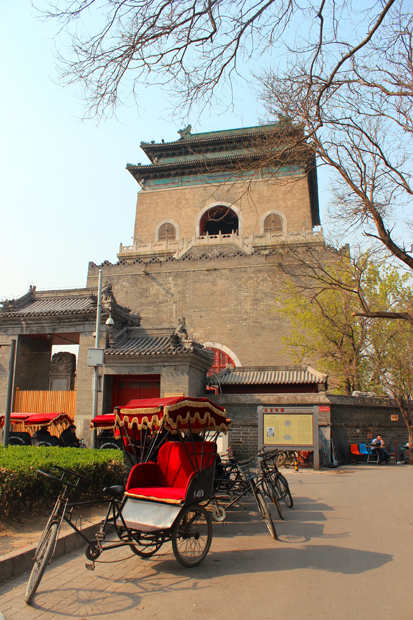
Bell Tower
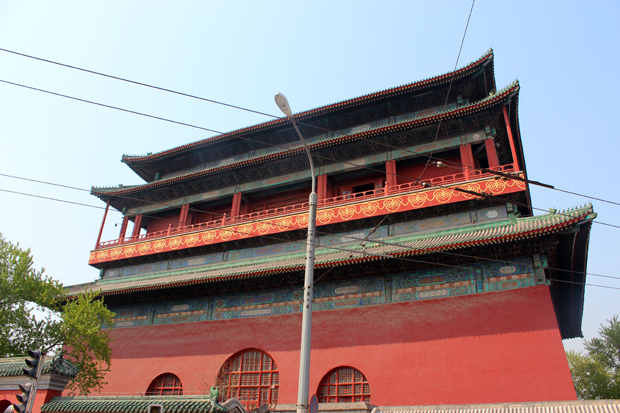
Drum Tower
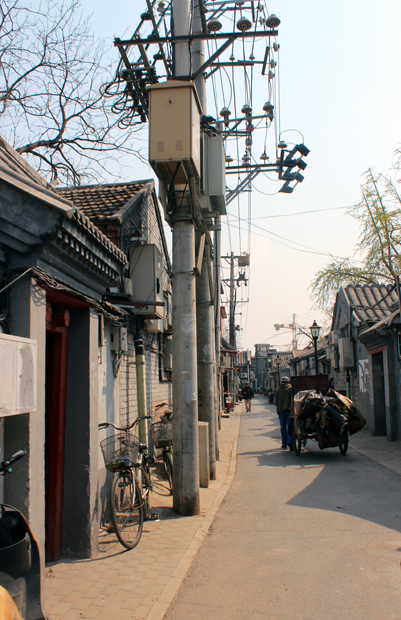
Narrow alley in a Hutong
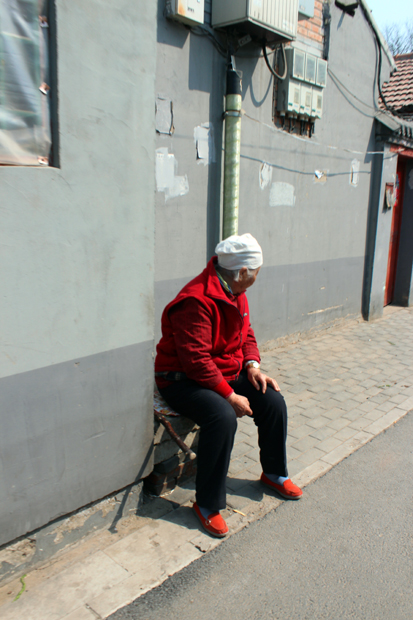
An elderly lady watching life around her
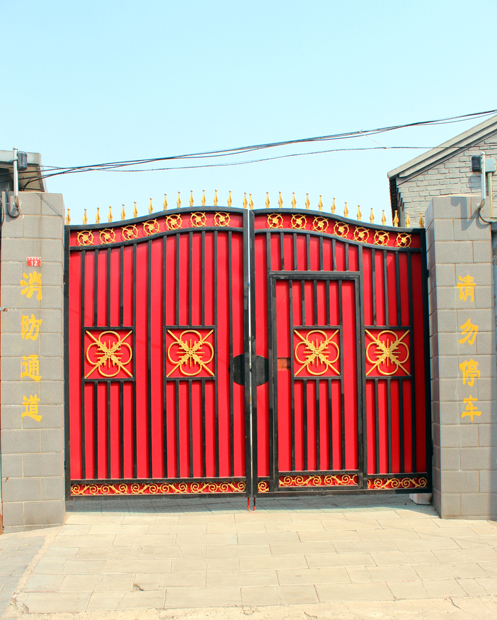
One of the picturesque Gates where my driver stopped
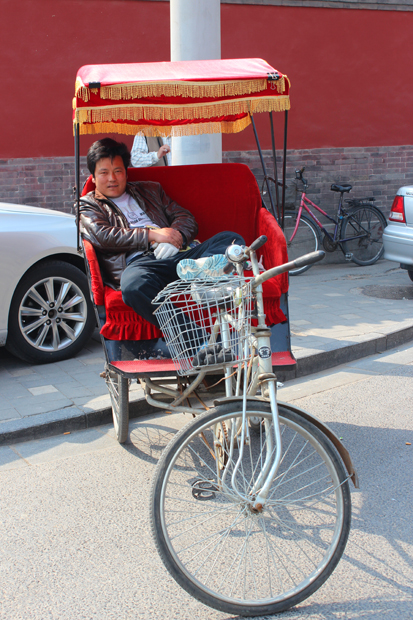
Cycle Rickshaw driver taking a rest

Street scene in a Hutong
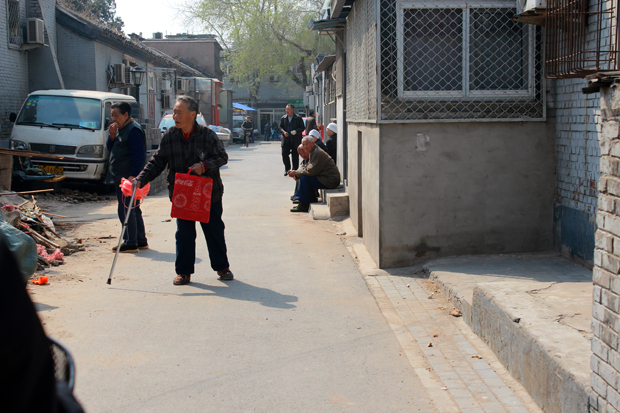
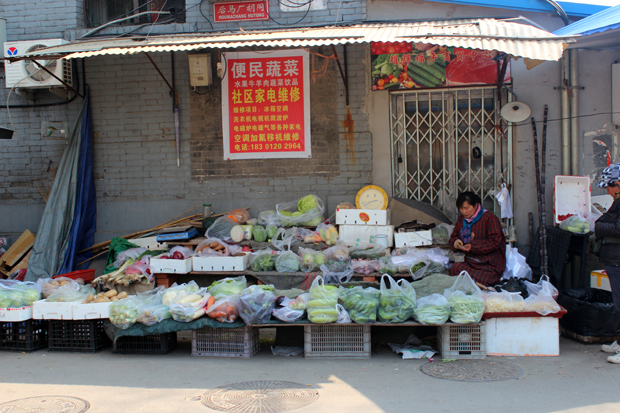
Local vendour selling fruits and vegetables
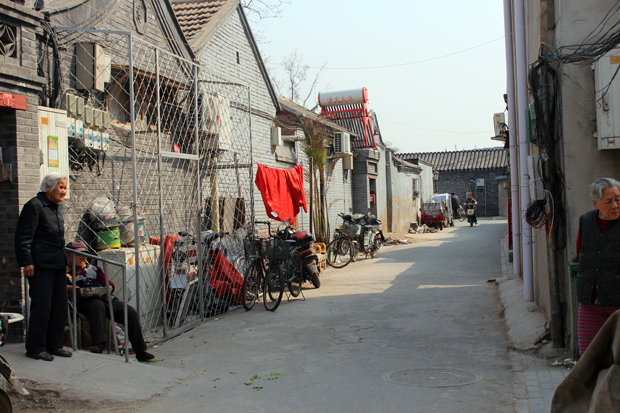
People in the Hutong having a chat
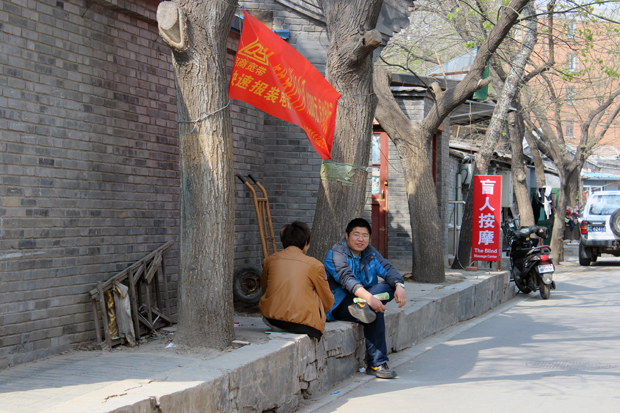

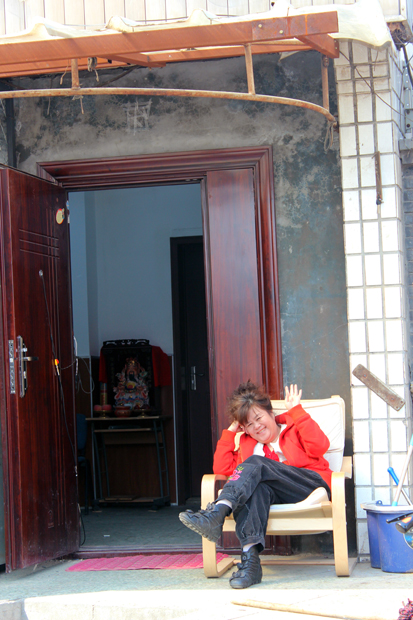
Friendly lady in the Hutong
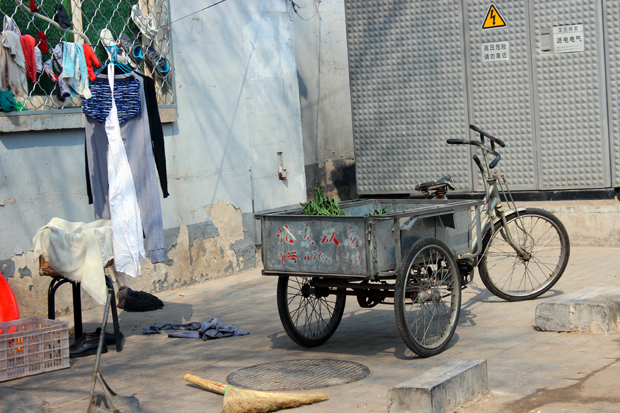
Still life
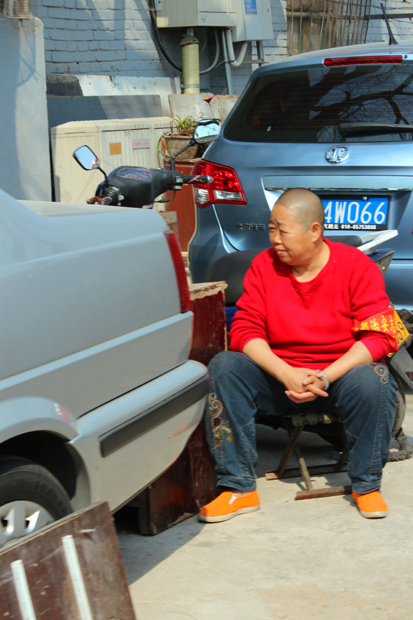
Taking a rest
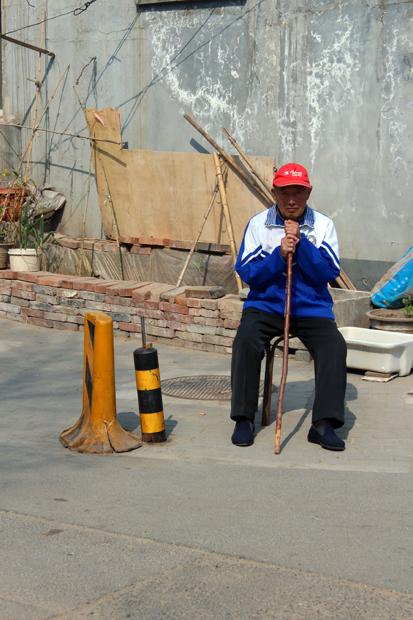
Elderly man watching the people
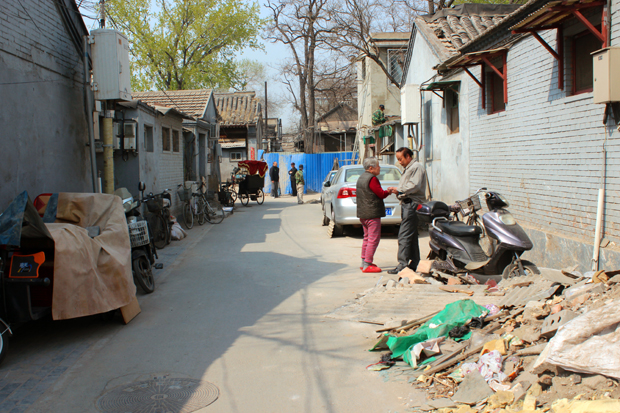
More street scenes
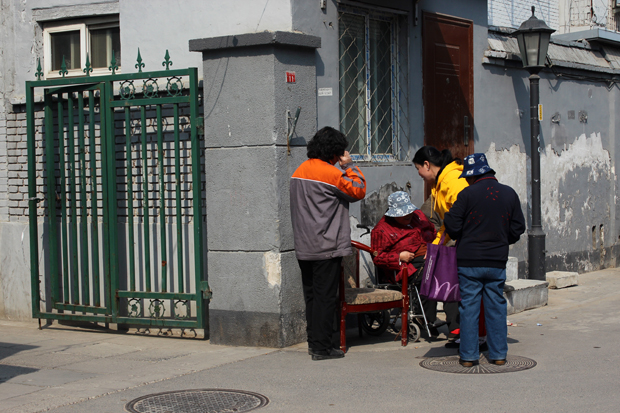

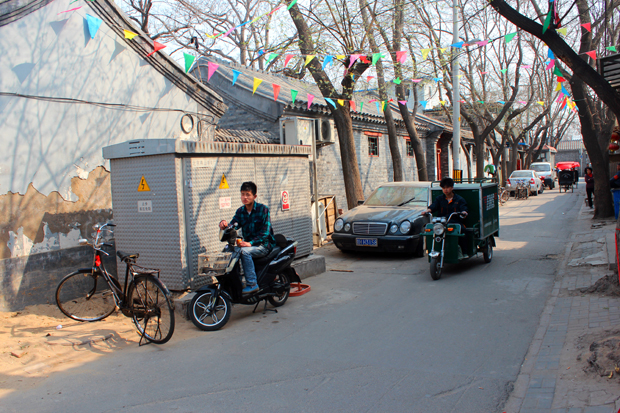
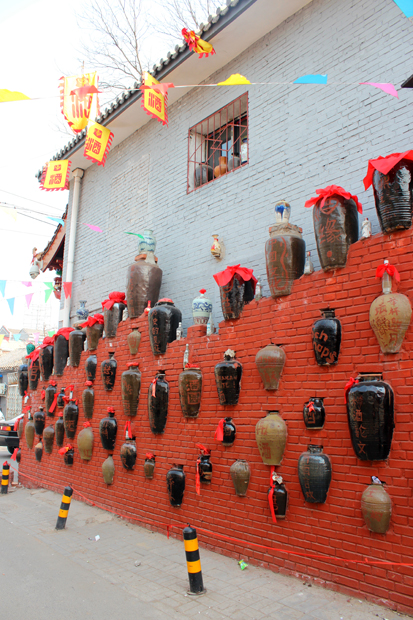
Liquor museum
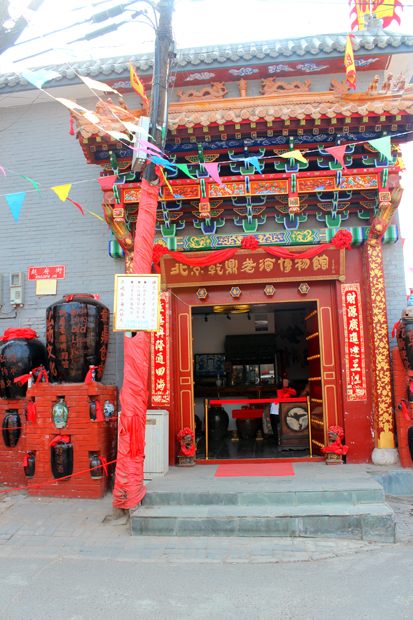
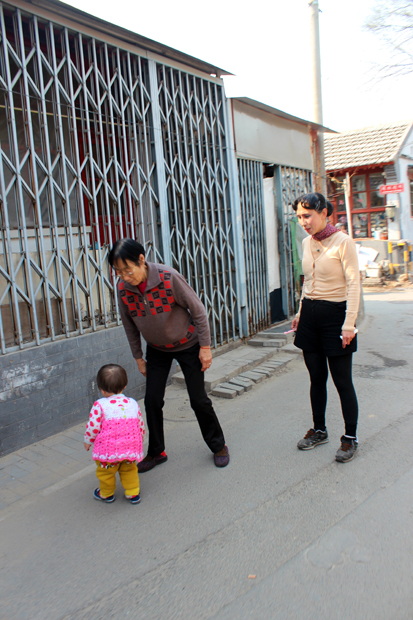
Playing with children
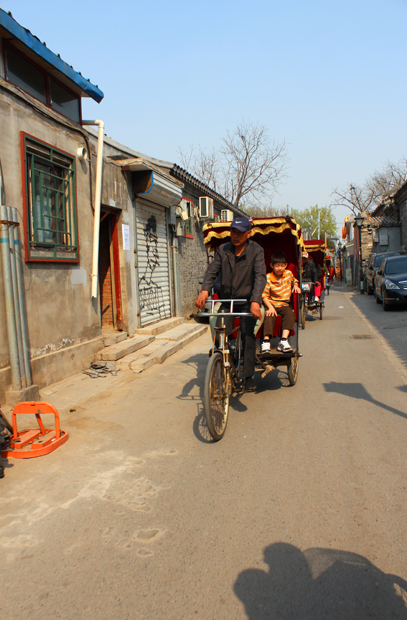
Cycle Rickshaws, a mode of transportation for short ways
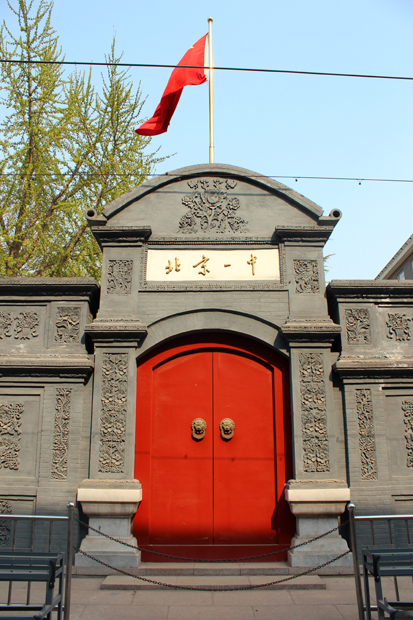
Further picturesque Gates
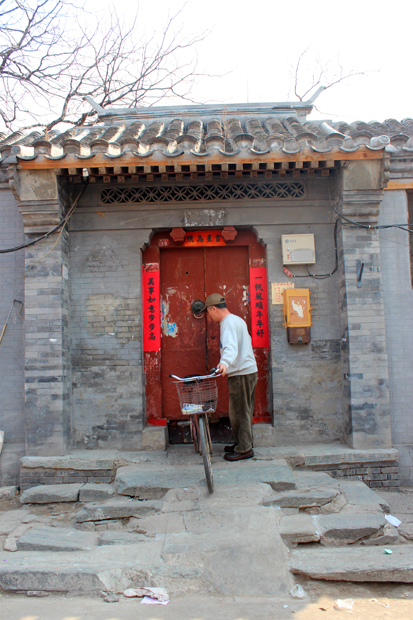
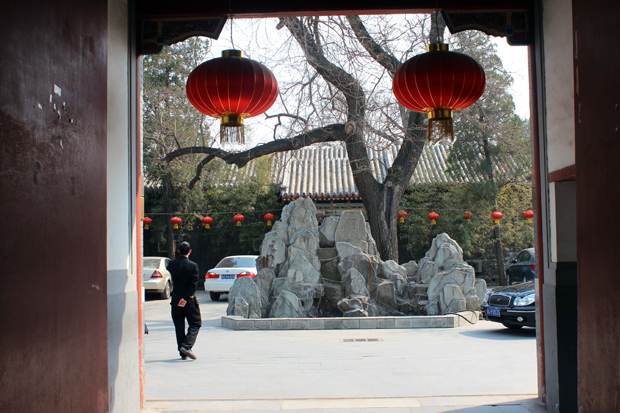
Courtyard
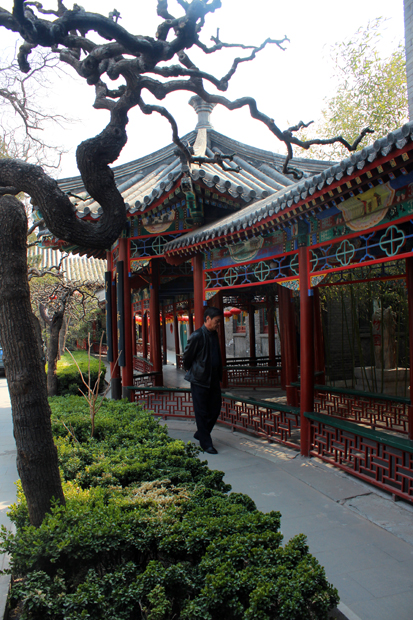
(Not so long) long corridor
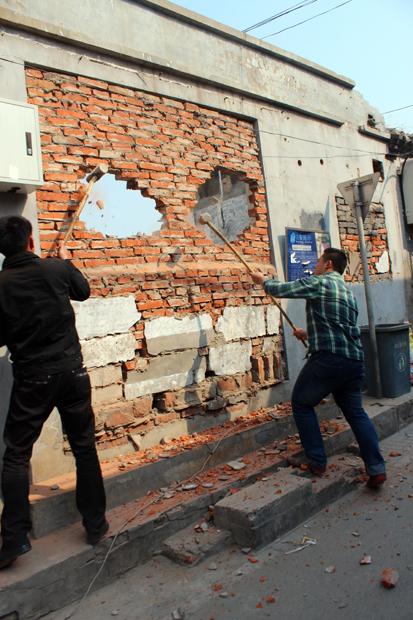
Men demolishing a wall by hand
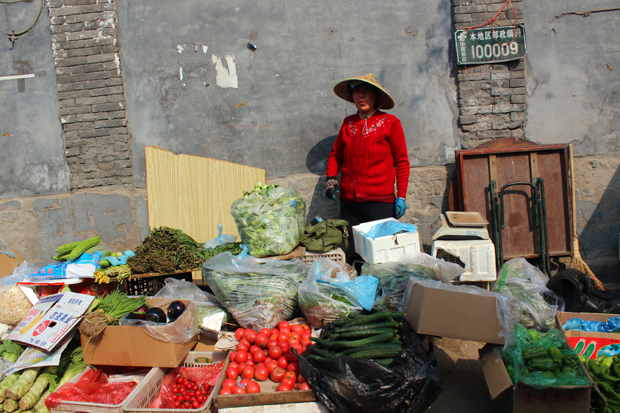
Street vendor
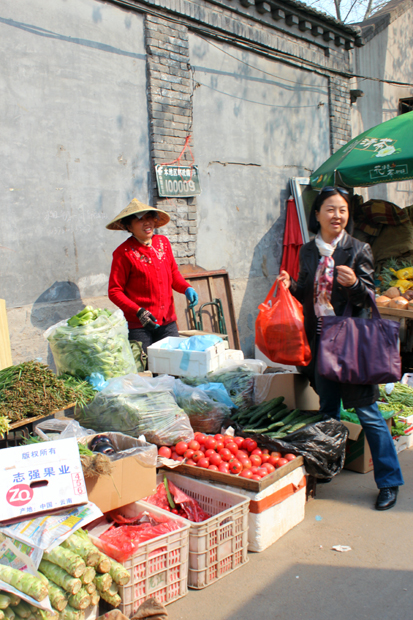
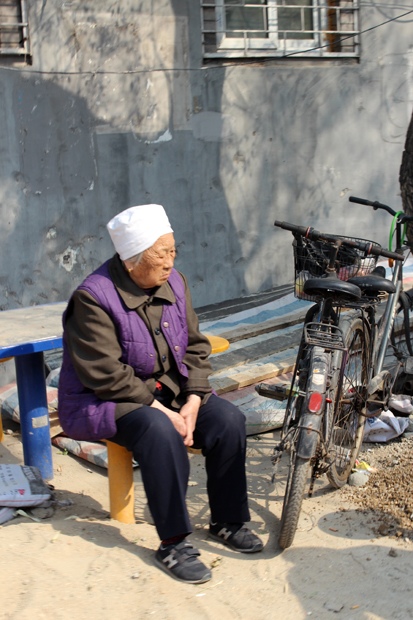
Another local elderly Lady in a Hutong
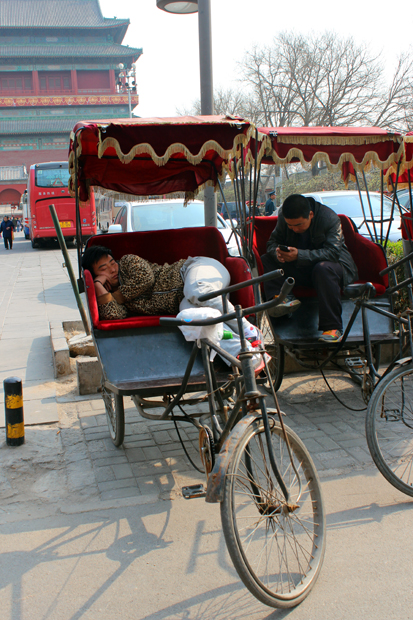
Cycle Rickshaw drivers are taking a rest
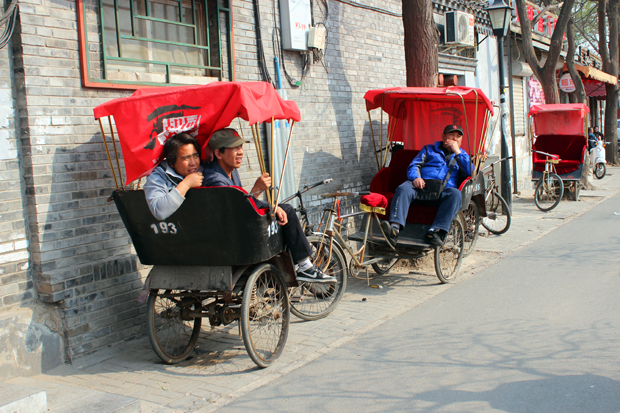

Rickshaws at a square next to the Bell Tower
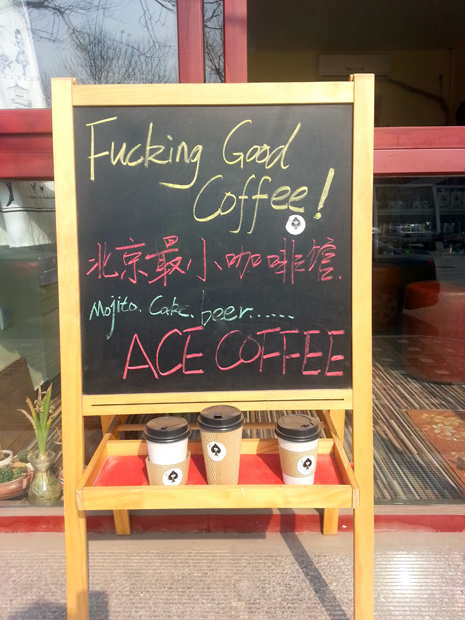
The owners must be really convinced about their coffee

[…] I heard about “The Hutong”, a cultural exchange center which is located in one of the Hutongs in Beijing and offers cooking classes, I knew that I would like to attend. I did another two […]
[…] “The Hutong” gehört habe, einem kulturellen Austauschzentrum, das sich in einem der Hutongs in Peking befindet und Kochkurse anbietet, wusste ich, dass ich daran teilnehmen möchte. Ich habe […]
[…] walked through the narrow alleys of the Hutong how the traditional quarters in Beijing are called. It was a lovely late summer morning at the end […]
[…] in the Hutongs by myself as I absolutely love these old traditional quarters. For me, they are the Soul of the Beijing and give the city a lot of its […]
[…] also spent a lot of time in the Hutongs of the city and revisited my favourite temple in Beijing, the Lama temple aka Yonghe Gong. I discovered the […]
[…] love the Hutongs and the many temples of the city, the tibetan Lama temple has soon become my favourite one. I adore […]